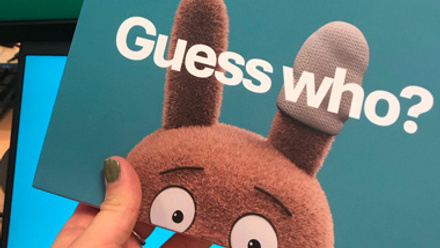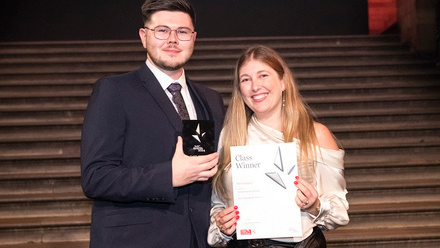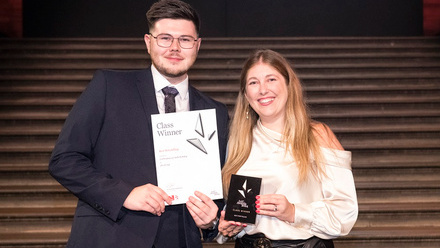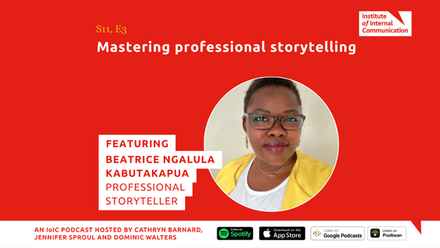In this post I’m going to suggest an approach to internal communication that fosters emotional engagement and wholehearted connection between colleagues. I’m also going to introduce you to a new way of using the phrase “beast”.
A beast is "an unexpected and absurd experience you later laugh about". I’m originally from Yorkshire and grew up using the term like this, for example as a noun “I had a complete beast in the gym last week” or as a verb in the present continuous “Oh my god I’m beasting!”.
Our beasts are a powerful way to connect with people because they combine empathy, courage and humour. They are funny because of their unexpected and often absurd nature and they fuse courage and empathy because they reveal vulnerability and we all know exactly how these experiences feel.
Work Culture
I’m actually surprised that more companies have not harnessed the power of these stories for creating engagement and connection yet. Our beasts are found everywhere in society’s culture at the moment. On the radio there are segments where people send in an unlucky or embarrassing story related to a particular theme and it’s the same with podcasts.
The BBC have various podcasts dedicated to embarrassing stories and Elizabeth Day’s “How to Fail” has become incredibly popular since its launch in 2018, it’s one of many that are de-stigmatizing failure and promoting the courage to take risks and learn from mistakes.
LinkedIn is littered with posts about the benefits of being open about failure and we’re quick to sharefunny failure experiences with friends and family - it helps us to process them and brings us closer together.
At work it’s slightly different. Traditional attitudes force us to always focus on achievements and goals and we feel the need to project a successful image of ourselves to be professional. Sharing a failure story with colleagues will likely make you feel a bit uncomfortable.
I think these conventional attitudes contribute to the shockingly low levels of employee engagement we see in the world today and why work-related stress is at an all time high - it’s partly because we can’t be ourselves at work.
The idea of being authentic and open makes us feel awkward but we’re desperate to see it in others - it just takes courage.
Brené Brown describes the paradox “We’re drawn to those who are real and down-to-earth, but we run in the opposite direction of making ourselves that way. That’s the struggle. We want it from others, but we don’t want to do it ourselves.”
It might take bravery but the benefits of sharing an embarrassing story with colleagues have been documented in research.
Innovation and Engagement
Leigh Thompson from Northwestern University's School of Management researched brainstorming and creativity after hosting corporate retreats. She observed that after attendees engaged in an ice-breaker that involved sharing accomplishments and achievements, they tended to self-censor and were less likely to share ideas.
Thompson and her team began investigating if there was another way to promote innovation and creativity and found that after sharing an embarrassing story instead as an icebreaker, participants were more engaged and generated both a larger number and a wider range of ideas.
This research suggests that if internal communications teams and company culture primarily focus on success and achievements, it may actually be harming employee engagement. Of course it’s important to celebrate accomplishments and success but we should also acknowledge and be open about the misfortune side of life too.
We fear humiliation more than we anticipate success, so if we’re more open and realistic about life’s experiences we can inspire others to strive harder and succeed. The idea of creating a safe environment for openly discussing and learning from failure is certainly becoming more popular.
Psychological Safety
Amy Edmonson from Harvard first researched psychological safety in a medical setting but her research became famous after Google launched a study called “Project Aristotle” to understand what makes teams effective and they found above all else, psychological safety was THE most important factor.
Psychological safety is the belief that your team will not ridicule or punish you for speaking up, being yourself, taking risks or making mistakes. In this atmosphere, people are more open about concerns or new ideas and it’s essential for inclusion. I recently learnt about a law firm that had a brilliant initiative to hire more people from dis-advantaged communities which succeeded at first, but after a year, the individuals started to leave because they felt like they didn’t fit in.
We need strategies and structure that create authentic, human connections between colleagues.
MyBeast
MyBeast workshops create a safe and supportive environment to share stories as we explore failure, psychological safety and storytelling skills. They also include creative exercises that generate inclusive humour.
“Taming the beast” involves pairing up with someone to craft your story which you should take pride in and it’s important people don’t feel pressure to produce a crazy and hilarious story.
In Humor, Seriously: Why Humor Is a Superpower at Work and in Life authors Jennifer and Naomi highlight research showing what’s more important than being funny is simply signalling that you have a sense of humour.
The power of these stories can bring remote workers closer together, break down barriers between teams, make colleagues feel more like friends and reveal the human in senior figures. A MyBeast strategy is flexible but it’s important to address it with sincerity.
Jason Rawding
If you would like to learn more please email me on [email protected]
I’d like to thank Jennifer Sproul for inviting me to write this blog and the fantastic work from the team at the Institute of Internal Communication.






